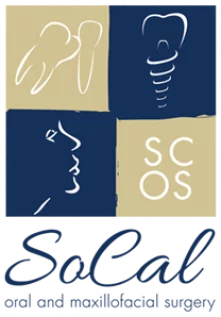Tooth troubles can strike at any time, leaving you with tough choices. One of the most daunting decisions is whether to extract a tooth or try to save it. While preserving your natural teeth is always the goal, sometimes extraction in Tustin, CA, becomes necessary for your overall health. But how do you know when it's time to say goodbye to that stubborn tooth? This guide will walk you through everything you need to consider about tooth extractions—so you'll feel empowered and informed when facing this dental dilemma. Let’s dive into what extraction really means, why it may be needed, and the options available to keep your smile shining bright!
What is Tooth Extraction?
Tooth extraction is the process of removing a tooth from its socket in the jawbone. This procedure can be done for various reasons, often to improve oral health or alleviate discomfort.
Dentists typically perform extractions under local anesthesia, ensuring minimal pain during the process. They may use specialized tools to loosen and remove the tooth carefully.
Extractions can involve simple cases—like pulling a visible tooth—or more complex situations that require surgical intervention, such as impacted wisdom teeth. Each case is unique and demands careful evaluation by your dentist.
While losing a tooth might feel daunting, this procedure can provide relief from issues like infection or overcrowding. Understanding what extraction entails helps demystify this common dental solution for many patients facing tough decisions about their oral care.
Reasons Why A Tooth May Need To Be Extracted
Tooth extraction can become necessary for various reasons.
- One common cause is severe decay, where the damage extends beyond repair. When cavities reach deep into the tooth, they can lead to infections that jeopardize surrounding teeth.
- Another reason could be gum disease. Advanced stages of this condition may loosen teeth and create space issues in your mouth, prompting extraction to preserve dental health.
- Impacted wisdom teeth often require removal as well. These third molars can grow at odd angles or remain trapped beneath the gums, causing pain or crowding other teeth.
- In some cases, trauma from accidents results in fractures so complicated that saving the tooth becomes impossible. The goal here is to maintain overall oral health while minimizing discomfort and further complications.
- Additionally, orthodontic treatments might necessitate extractions to create optimal alignment for remaining teeth during adjustment processes.
The Risks Associated With Tooth Extraction
Tooth extraction is not without its risks.
- One common concern is the possibility of infection at the extraction site. Bacteria can easily enter the open wound, leading to complications that may require further treatment.
- Another issue to consider is the dry socket. This painful condition occurs when the blood clot fails to form or dislodges too soon, exposing bone and nerves beneath. It often results in severe discomfort and a longer healing time.
- Nerve damage is also a potential risk, particularly for wisdom teeth extractions. If nearby nerves are affected during the procedure, it can lead to numbness or tingling in the lips, tongue, or chin—sometimes lasting for months.
- Excessive bleeding during or after an extraction can occur, especially if you have certain medical conditions or are taking specific medications that affect blood clotting. Always discuss your health history with your dentist before undergoing any procedures.
Alternatives To Tooth Extraction
When faced with the possibility of tooth extraction, several alternatives may help preserve your natural teeth.
- Dental fillings are a common option for treating cavities and minor decay. By removing decayed portions and filling them, you can save your tooth while restoring its strength.
- Another effective alternative is root canal therapy. This procedure addresses infections in the pulp without losing the tooth itself. After cleaning out the infected area, dentists seal it to prevent further issues.
- For crowded or misaligned teeth, orthodontics can provide an excellent solution. Braces or clear aligners shift teeth into proper alignment without extraction.
- In some cases, dental crowns offer protection for weakened teeth that have undergone significant damage but remain salvageable. They shield your remaining structure from further harm while enhancing aesthetics.
Exploring these options with your dentist can lead to better outcomes than extraction alone. Contact us to learn more.
The Importance Of Consulting With A Dentist Before Making A Decision
Before deciding on a tooth extraction, consulting with an experienced dentist is crucial. They provide expertise that ensures the best treatment plan tailored to your unique situation.
A thorough examination can reveal underlying issues that may not be immediately obvious. This assessment helps in understanding whether extraction is truly necessary or if other options exist.
Dentists also discuss the potential consequences of removing a tooth. Understanding these risks empowers you to make an informed choice about your oral health.
Moreover, they can guide you through alternatives like root canals or crowns that might save your natural tooth and preserve its function.
Open communication with your dentist fosters trust and clarity. It’s important to express any concerns or preferences so the approach aligns with what feels right for you.
Tips For Caring For Your Mouth After A Tooth Extraction
After tooth extraction, proper care is vital for a smooth recovery.
- Start by biting gently on the gauze pad provided to help control any bleeding. Replace it as needed until the bleeding subsides.
- Avoid rinsing your mouth vigorously within the first 24 hours. This can dislodge the blood clot that forms in the socket, leading to complications.
- Stick to soft foods like yogurt and mashed potatoes for a few days. These are easy on your healing gums and provide necessary nutrients without causing irritation.
- Stay hydrated, but steer clear of straws. The suction can disrupt healing and create discomfort.
- Pain management is essential, so follow your dentist's recommendations regarding medication. Ice packs applied outside your cheek can also reduce swelling effectively.
- Maintain oral hygiene, but be gentle around the extraction site. A mild saltwater rinse after 24 hours may aid in keeping infection at bay while promoting healing.
Conclusion
When it comes to tooth extraction, understanding the ins and outs can help you make informed decisions about your dental health. Extractions in Tustin, CA, are often a last resort after considering all other options. It's crucial to weigh the reasons for extraction against potential risks.
Seeing a dentist is essential before making any final choices. They can guide you through alternatives that may preserve your natural teeth whenever possible. If an extraction becomes necessary, proper post-care will ensure healing and comfort as you adjust.
Your dental health significantly impacts overall well-being; staying proactive about it is key. Whether you're facing an impending extraction or seeking preventive measures, prioritizing consultation with professionals ensures that you're on the right path for lasting oral health.
Visit SoCal Oral and Maxillofacial Surgery at 13522 Newport Avenue, Suite 109, Tustin, CA 92780, or call (714) 730-6767 to determine the appropriate extraction method, ensuring optimal outcomes and preserving oral health.
Location
13522 Newport Avenue, Suite 109,
Tustin, CA 92780
Office Hours
MON9:00 am - 5:00 pm
TUE8:00 am - 5:00 pm
WED8:00 am - 3:00 pm
THU8:00 am - 5:00 pm
FRI7:00 am - 3:00 pm
SATClosed
SUNClosed
13522 Newport Avenue, Suite 109,
Tustin, CA, 92780
Phone: (714) 730-6767Text Us: (714) 730-6767





